
"Touhou Koumakyou ~ The Embodiment of Scarlet Devil" is the 6th installment of the popular bullet-hell doujin series, The Touhou Project. It is the first entry to be released for Windows, and it considered one of the most popular danmaku games of all time. Like every other game in the series, it was created by Junya Ota (more well known as ZUN), where he did all the coding, art, and music.
I stumbled across this game many years ago, when I was in the peak of my anime phase in middle school. I remember being exposed to the soundtrack for this game, and I was blown away. I kid you not, it changed my life. I wanted to compose music like ZUN did, which was one of the many stepping stones that led me to study music composition in college and desire to pursue it for a career! I never actually played the game until years later, right around the end of high school into the start of undergrad. I never realized just how genuinely well-crafted this game was, and I wonder if I would've also gone into game development if I got to play it much earlier in life.
Ok enough sappy business, let's get into the game itself.
Plot/Characters
The game revolves around two characters, Reimu Hakurei and Marisa Kirisame. Reimu is a shrine maiden who is the main face of the Touhou series, and she has no moral quandaries about beating the shit out of some youkai. Marisa is a human magician who is rebellious and a bit tomboyish, and is considered both Reimu's rival and ally throughout the series.
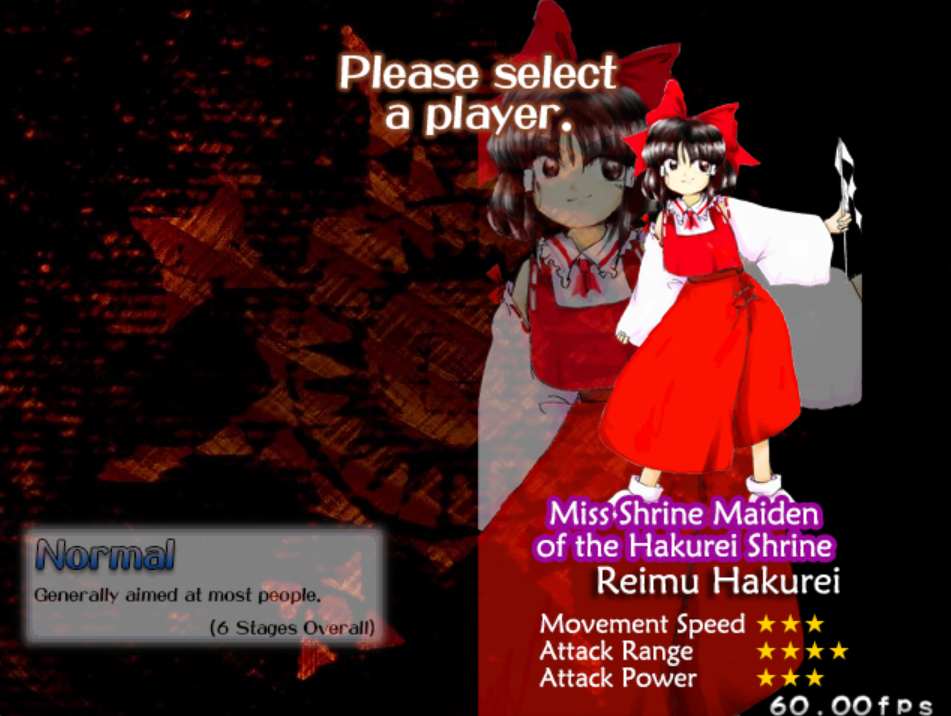
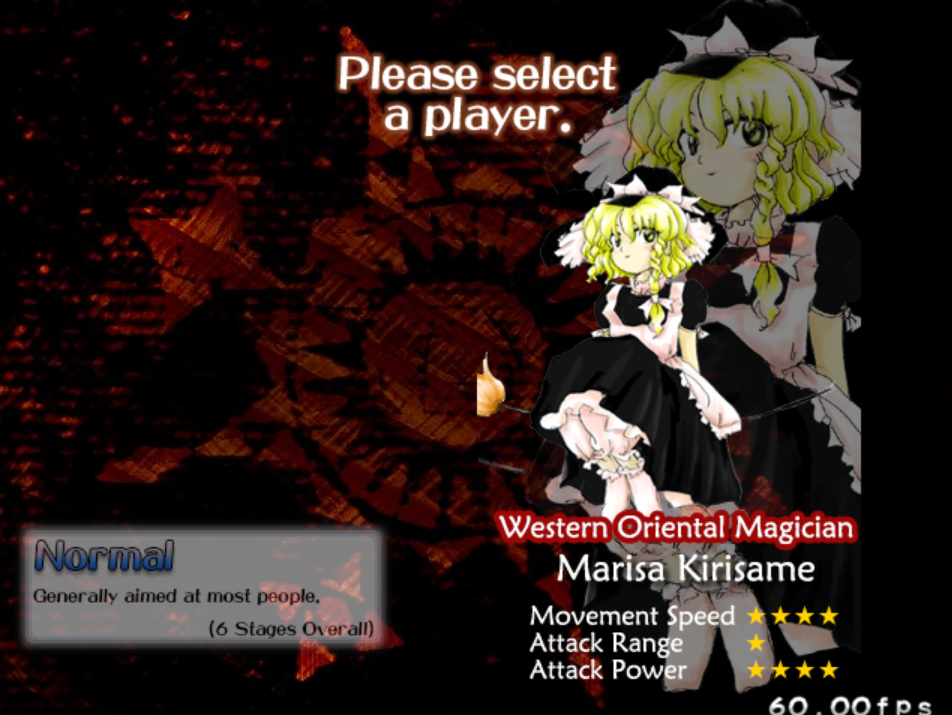
In the events of the game, Reimu or Marisa discover that the sky is being covered in a thick red mist, preventing the sun from shining. Our protagonists decide to investigate why this is happening, and to punish whoever is responsible.
First, while traveling over the Misty Lake, the heroine stumbles upon the youkai Rumia, and the ice fairy Cirno. Neither have any correlation to the mist, but try to stop the heroine regardless. Rumia, being a youkai, attacks the player in order to eat her. Meanwhile, Cirno wants to show off her immense powers, proving that she is much stronger than her fellow fairies.
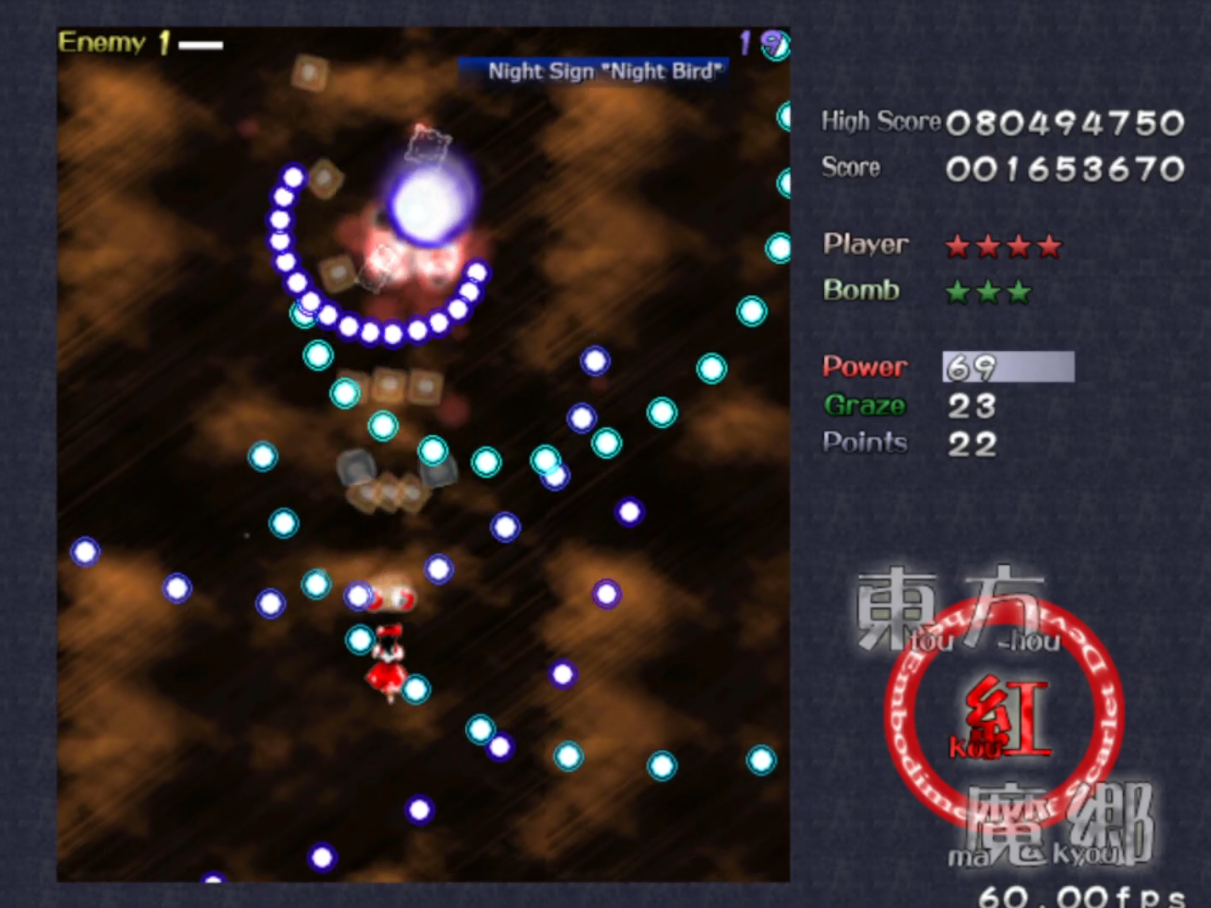
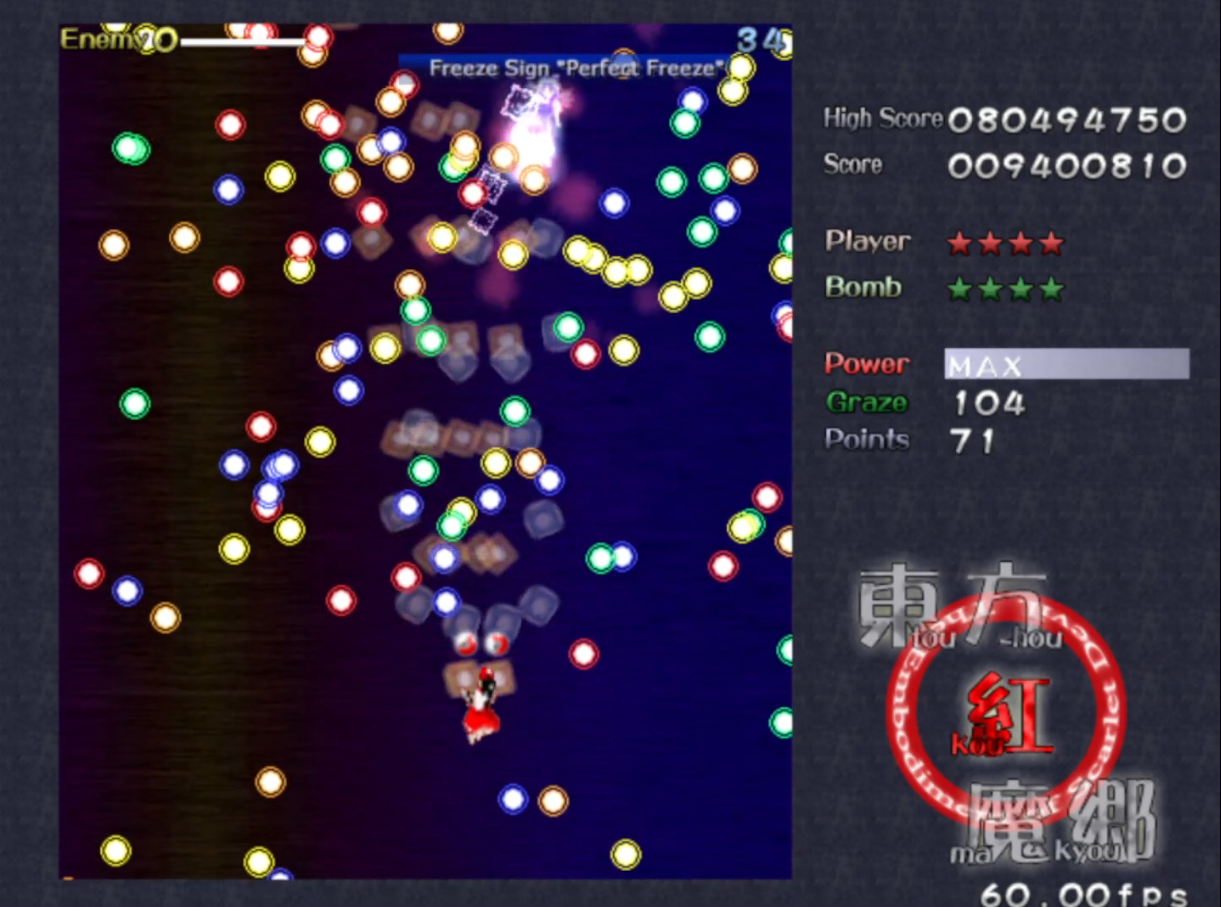
Eventually, the heroine reaches the gates of the Scarlet Devil Mansion, which has seemingly appeared out of nowhere. A youkai named Hong Meiling guards the gates, being hired by the main antagonist for her mastery of qi to take down her foes. However, she is not very strong, and is defeated by our heroine.
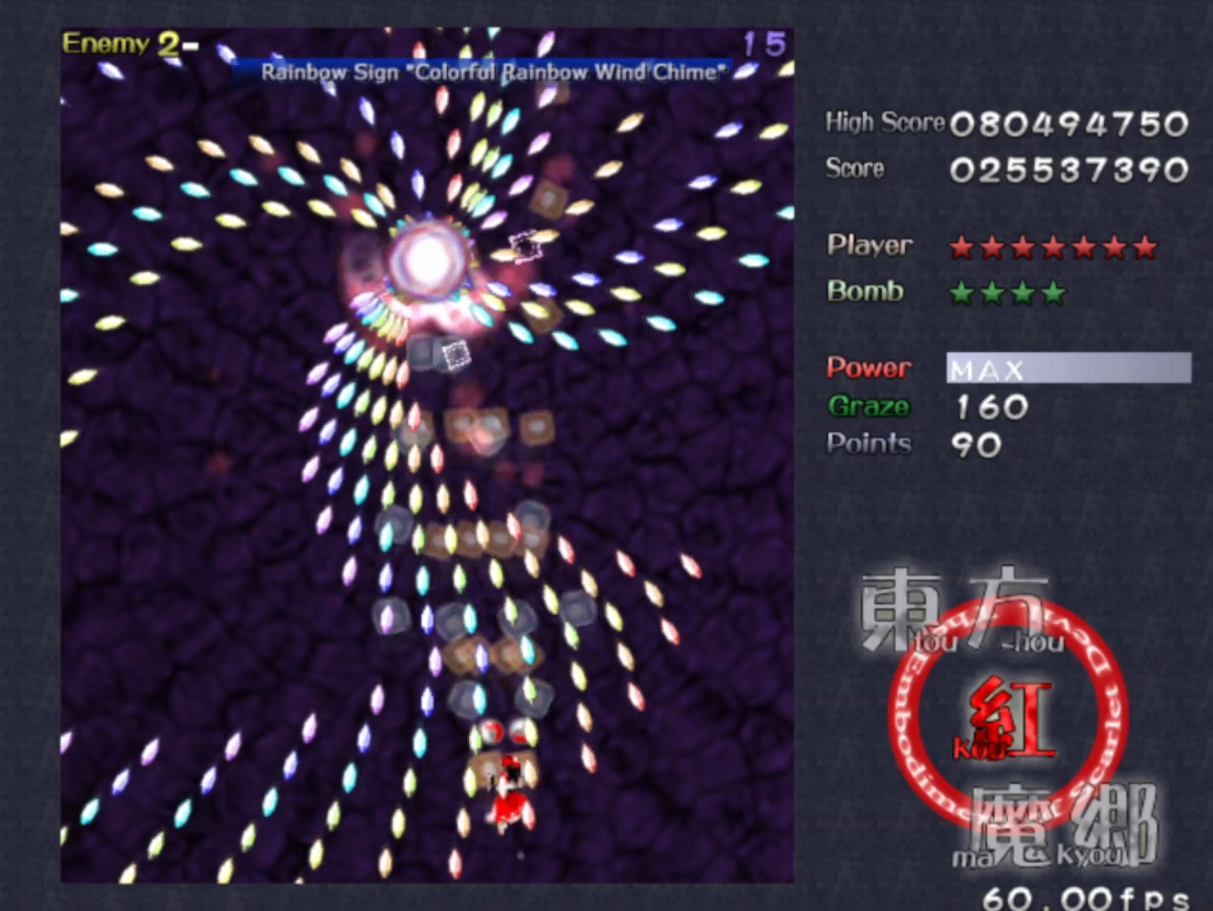
We enter the Scarlet Devil Mansion, which is a manor
with rooms that appear much larger than the exterior of
the builing. Here, the heroine travels through the
library and encounters the magician Patchouli Knowledge.
She is the resident librarian who rarely leaves the
mansion due to her poor health. Later on, the maid
Sakuya Izayoi arrives to stop the heroine in her tracks.
Acting as the antagonist's personal bodyguard, she has
the powerful ability to stop time, which she uses to
hurl hordes of knives and daggars at her enemies.
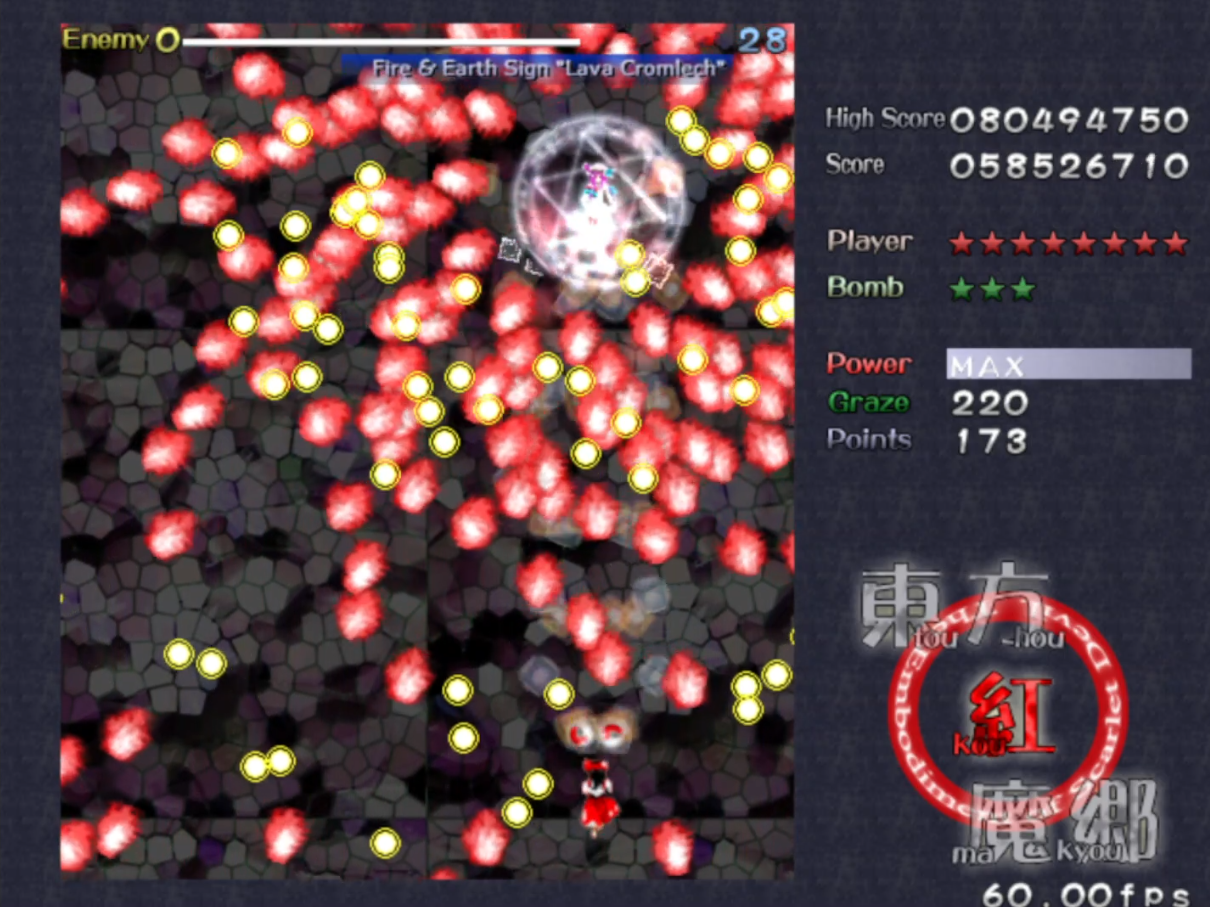
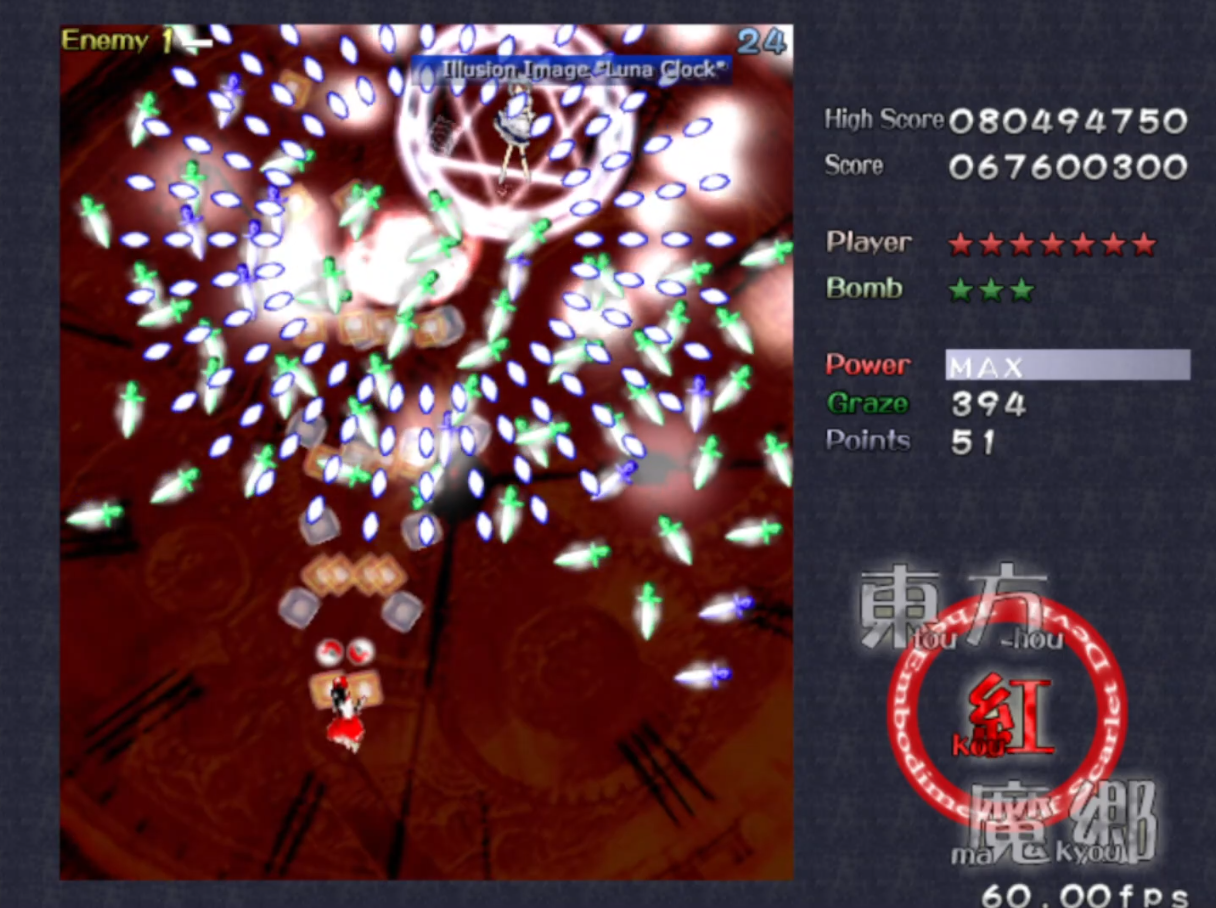
After Sakuya is defeated, the heroine finally reaches the end of the mansion and faces off against its owner, Remilia Scarlet. She explains that she created the sun-blocking mist so she can leave the manor whenever she pleases, without worrying about being hurt by the sun's rays. This answer is still problematic to our heroine, and the two break out into a fight. In the end, Remilia is defeated, and (in the canonical endings) the mist is finally cleared from the sky.
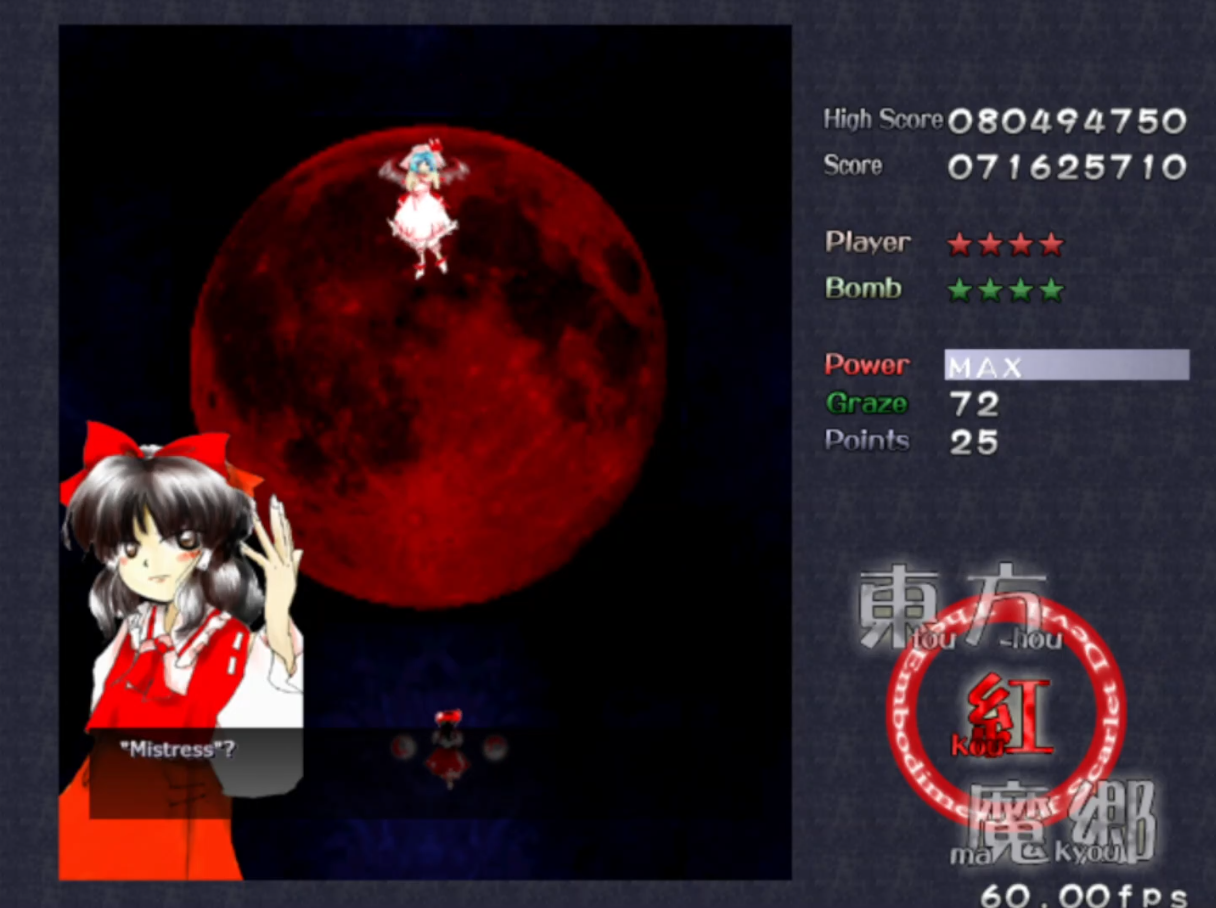

Gameplay
The game comprises of 6 stages, all of them with the same structure to them. Each stage has small enemy formations that attack semi-randomly, sometimes with specific patterns that are not highly sophisticated. This is to keep the player on their toes, and to help them anticipate what comes next. Each stage also has a mid-boss to help break up the stage. After this, there is a boss stage, where the player goes one-on-one with a strong character.
What makes Touhou unique from other bullet-hell games is the use of the Spell Card system. This acts both as a narrative device for the Touhou world as well as a means of organization for a boss's attacks. Gameplay-wise, Spell Cards are special attacks with complex, yet strict patterns to them. Once the enemy's HP is emptied, the Spell Card is cleared. Every boss has multiple Spell Cards, with stronger enemies having more of them, meaning you need to empty their HP multiple times to defeat them. There is a counter in the corner of the screen that lets the player know how many Spell Cards are left, so there's no need to guess how many are left in a stage.
Alongside the 6 stages, there is also an extra stage, where you head back to the Scarlet Devil Mansion and fight Remilia's sister, Flandre Scarlet. You can only access the extra stage after you've completed the game on either Normal difficulty or higher.
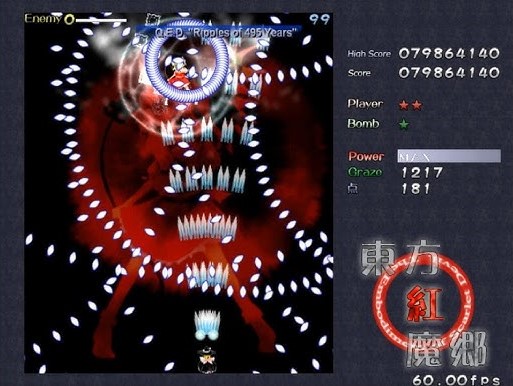
I'm not good enough at the game to get a screenshot of the extra stage, this came off of Google
Art
One of the most interesting parts of this game is the art, specifically how it manifests itself. Each character in the game has their own portrait, that is clearly scanned in from a hand-drawn image. At this point in his career, ZUN hadn't done a lot of drawings from complete scratch. Therefore, some of the art looks a little... scrungly? Is that the word I wanna use? Sure, why not. The portraits of Meiling and Sakuya are good examples of my point.
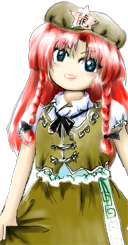
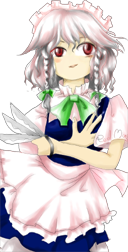
For backgrounds, the game uses either 3D renders of an environment, a JPEG that's been heavily edited, or some combination of both. Typically, the renders are used for stages, and JPEGs are more used for Spell Card attacks.
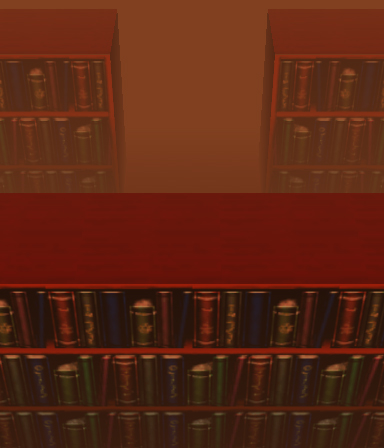
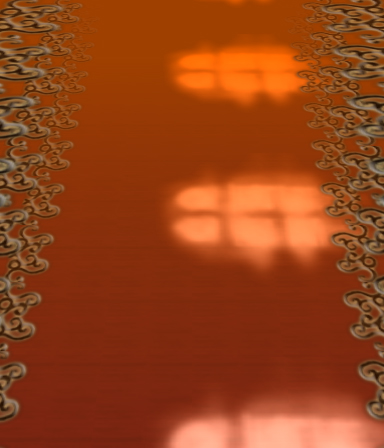

Music
The music in this game is probably more well-known than the game itself. Honestly, considering how incredible it is, it's hard not to see why. Also, as I previously stated, I love the music in this game so much. I could make an entire page dedicated to the music and really pick apart why I love it, but I'm gonna try to reel it in and be more structured about my thoughts.
Most of the music has a similar vibe, yet shows a lot of ZUN's versatility when it comes to him showcasing his ideas. What most of the songs have in common is that they are highly energetic, usually showcasing that with a high tempo and/or playing accompanimental parts at high speeds. They also try to combine ZUN's love for Eastern styles of music (seen in his choice of scales, complex polyphony, etc.) with more Western styles of music (seen in his choices of instruments, semi-improv parts, etc.)
The one thing that's always stood out to me with this soundtracks is how he builds his ideas. A lot of songs love to change keys multiple times in one piece (or in one phrase!) It takes a melody and puts a new spin on it, and I think he uses it enough that it is effective. He also does a lot of time signature changes in this soundtrack too, which was something I never heard a lot of when I first got exposed to his music! I still think it's awesome; it takes his writing to a whole other level!
ZUN is also really good at creating these really lush, multi-layered pieces. You have your usual melody, bassline, and percussion, but a lot of the time he'll have these counter-melodies placed within the texture. Sometimes they'll blend in with the overall accompaniment, other times they'll soar above the melody just to add more variety. It helps to tie in all of the things I previously spoke about with his music, from creating "fast" music to playing with scales/modulation, to even the improvisatory elements of his songs.
How it All Comes Together
I find the overall aesthetic of the game to not only so unique, but also very much a product of the working environment ZUN was living in. As a part of the "doujin" community, it was very much a small-scale, DIY sort of world. I find that his games (especially this one) feel very humble because of it.
In every part of this game, you can feel the passion of a small game developer who just wants to make something fun. The game is super challenging, but a blast to play. The art is amatuerish, but it's full of so much whimsy and charm. The music is loud and at times chaotic, but it is AMAZING!
Final Thoughts
If you are someone who has wanted to try a danmaku game and wanna see what it's all about, make EOSD your first outing. Come for the game, stay for the vibes. I think that the game has simple enough patterns that you will at least figure out what to do quickly, but it'll take a lot of time to master the ins and outs.
If you don't think this game is for you, that is completely understandable. You can at least take part in appreciating the characters and it's music! It's what got me and so many people into this series, which shows you the game has plenty more strengths than just being a hard video game.